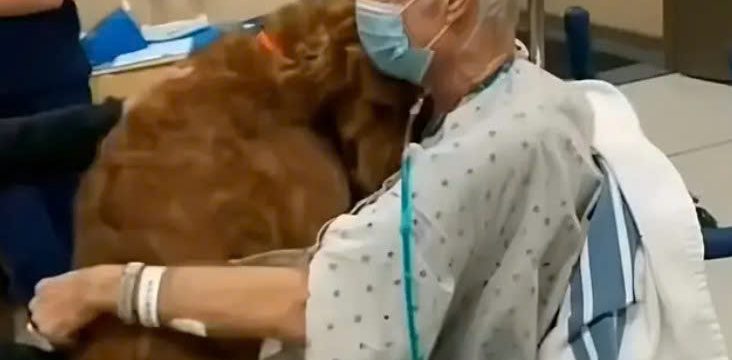In 1990, a remarkable act of bravery took place at the Detroit Zoo when a chimpanzee named Jo-Jo found himself in a life-threatening situation. Jo-Jo had been chased by a more dominant and aggressive chimpanzee inside the enclosure, and in an attempt to escape, he leapt over a barrier meant to keep him away from a man-made moat.

Unfortunately, that leap sent him straight into the deep water. Chimpanzees are not natural swimmers, and Jo-Jo immediately began to struggle, thrashing and gasping as he fought to keep his head above the surface. Around ten shocked visitors stood by, unable or unwilling to intervene. Among them was Rick Swope, a 33-year-old truck driver visiting the zoo with his wife and three children. From the moment Rick locked eyes with the frightened chimp, he felt an undeniable urge to act. The fear and desperation in Jo-Jo’s expression left no room for hesitation. Without stopping to consider the posted warnings or the inherent danger, Rick made the split-second decision to dive in and save him.
The risks were enormous—adult chimpanzees can be up to five times stronger than humans, and Jo-Jo was in an area surrounded by other chimps that could have reacted aggressively to an unfamiliar human entering their territory. Still, Rick pushed those dangers aside, climbing into the moat as his family and the other onlookers watched in stunned disbelief. The water was deep and murky, making it hard to see or move quickly, but Rick focused solely on reaching Jo-Jo. When he got close, he grabbed the chimp and tried to push him toward the edge of the enclosure. Jo-Jo, weighing about 200 pounds (90 kilograms) and flailing from panic, made the rescue far more difficult than Rick anticipated.
At one point, Rick lost his grip, and Jo-Jo slipped beneath the surface, disappearing from sight. The crowd gasped, fearing the worst, but Rick refused to give up. Summoning every ounce of strength, he dove down and managed to find Jo-Jo underwater, pulling him back up and making another determined push toward safety. Inch by inch, he moved the exhausted chimp to the edge until Jo-Jo was finally able to rest on solid ground. The 18-year-old chimp lay there weak and disoriented but alive, spared from drowning because one man refused to stand by and watch him die. Rick quickly climbed out himself, mindful that other chimps in the enclosure could become aggressive at any moment.
The entire rescue had unfolded in less than a minute, but the impact was unforgettable. Later, speaking to the Chicago Tribune, Rick explained what had driven him to risk his life: “He was looking at me. I think he knew what was going on.” It was a powerful reminder that compassion can bridge the gap between species, that a moment of connection can inspire extraordinary courage. While many animal rights advocates argue that wild animals like chimpanzees should never be kept in captivity—no matter how large or well-maintained the enclosure—the reality is that Jo-Jo’s ordeal took place in a zoo, where his survival that day depended on a human visitor’s willingness to break the rules and act.
No enclosure, however well designed, can truly replicate the freedom and richness of life in the wild, and incidents like this only reinforce the argument that animals belong in their natural habitats. Still, in this case, within the confines of a man-made environment, a rare and inspiring moment occurred—one where an ordinary man became a hero. Rick’s decisive action saved a life and left an indelible mark on everyone who witnessed it, serving as a testament to the instinct to protect and the courage to act, even when the risks are high. His bravery that day has been remembered and retold for decades, not just as a story about saving a chimpanzee, but as an enduring example of the human capacity for empathy, action, and selflessness in the face of danger.





